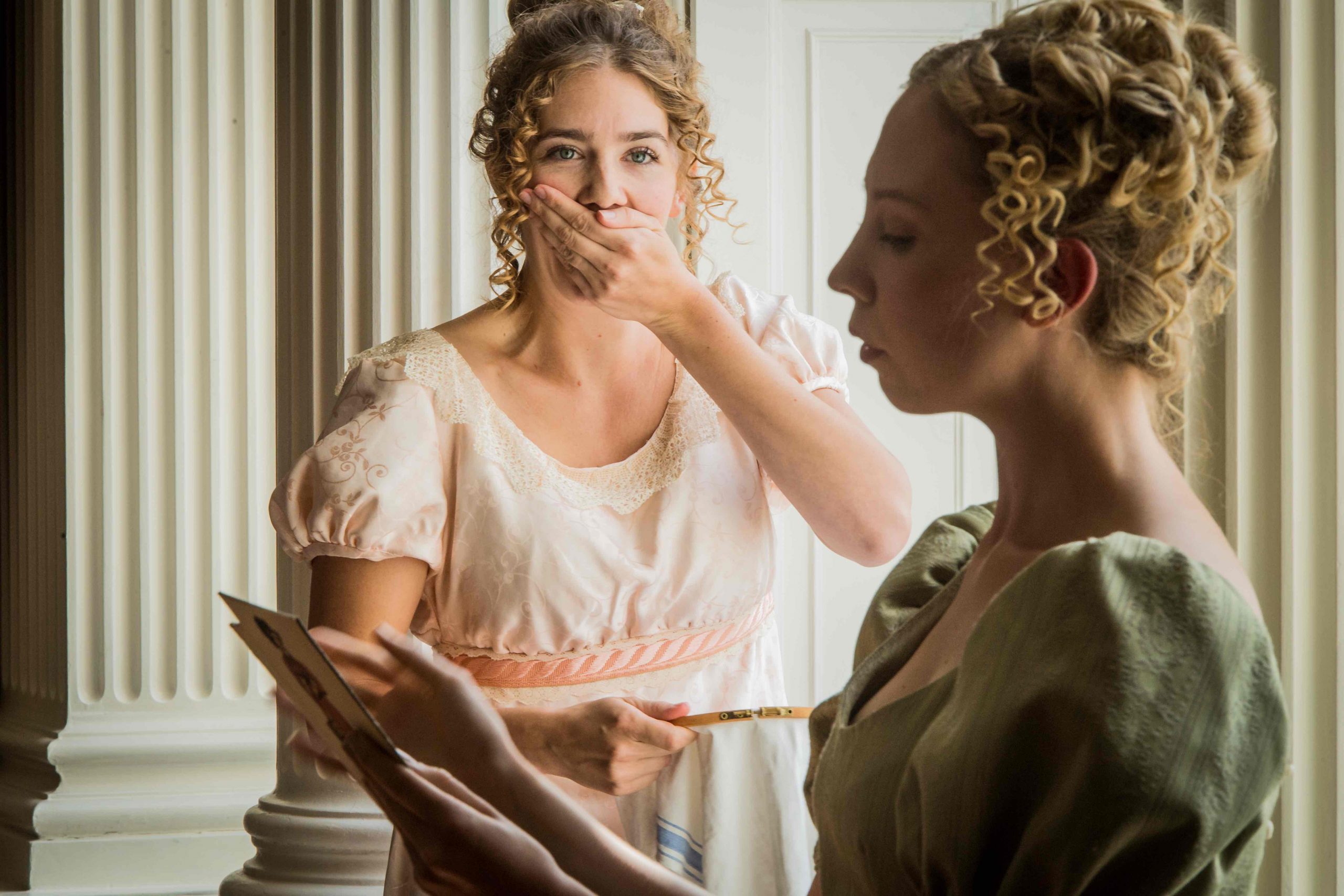
Jonathan Dove and librettist Alasdair Middleton’s Mansfield Park has been presented in a plethora of performance spaces since first staged in 2011. However, it is difficult to image a more idyllic and ideal venue than the elegant ballroom of Waterperry House which becomes part of the holistic experience of this charming take on the Jane Austen novel.
The chamber scale work with an ensemble of ten performers and piano duet, has what the opera calls chapters, each introduced by the players, and while they are in several locations the heart of the work is inside the Mansfield Park home of the Bertram family. It is thus perfect that the performance is experienced in a country-house. Similarly, always being in this smart period setting emphasises that the story is centred on social climbing, snobbery, material expectation, framing and constraining the emotions of the young people as they are manipulated into sensible marriages.
There are numerous relationships being forged, for good or for worse, but it is soon pretty clear the real love story is going to be that of Edmund, the son of the Bertram family who is destined for the clergy, and Fanny Price, the poorer relation who is dependent on the rich relatives. The other characters are the rest of the family, Sir Thomas and Lady Bertram, their daughters Maria and Julia and Aunt Norris, Lady Bertram’s widowed older sister. Maria is already engaged to the rich but thick Mr Rushworth owner of Sotherton Park, who introduces Henry Crawford and sister Mary to the Bertrams with crashing consequences.
In a fast moving, two act opera, much of the back story of Fanny Price, her experiences away from Mansfield Park, and other characters from the novel are omitted but the story and characterisations hold together well, thanks to a pithy and accessible libretto and, in no small part, the skill of the players.
Rebecca Meltzer’s production, here revived by Eleanor Burke, moves at a fast yet clear pace, finds imaginative ways of creating scenes, such as the grotto and the wilderness, the (highly symbolic) locked gate that the passion fuelled youngsters overcome. The stultifying effects of social convention and artifice are also achieved which, whether intended, draws the up-close-and-personal audience, some of whom have to be aware of their feet not invading the players’ spaces. It may have only been me, but I was also aware of being physically so close to the performers and at times averting my eyes!
As Fanny Price, Sian Griffiths conveyed the young woman’s own dilemma between maintaining moral correctness while wracked with her emotions for Edmund. Milo Harries captures the naivety of Edmund who seems not see how he is being groomed by Mary Crawford until the penny finally drops and he, of course, realises the love of his life has been in front of him all the time.
As the very different sister Maria and Julia, Ellie Neate and Sarah Anne Champion, draw convincing characters, conveying their own struggles with convention and affairs of the heart, bringing social disgrace.
Phil Wilcox’s Sir Thomas Bertram and Emily Gray’s Lady Bertram were well paired, the one weighed down with a simple philosophy dominated by wealth and convention and the other as devoted to her pug as her own offspring, possibly more. There was also much comic humour from the waspish Aunt Norris from Eleanor Garside.
As the dangerous interlopers Robin Bailey’s imposing, suave Henry Crawford and Eleanor Sanderson-Nash’s scheming Mary Crawford, were ideal in their roles. Lawrence Thackeray played a lovable if pathetic Mr Rushworth, never ceasing to try to please his wife.
Also in period costumes from Jane Black, the production’s music director Bradley Wood and repetiteur George Ireland, guided the pace and flow of the performance. Just as the drama combines humour, charm and some pathos, Dove’s score melds a variety of familiar musical flavours contributing to an instantly appealing musical whole that has the composer’s own voice. It demonstrates Dove’s ability to compose music that not only allows for realism in vocal rhythms but also comprehension of what is being sung, a welcome talent indeed. Vitally, the singing is always polished and appelaling; there are voices I will be listening out for in future productions.
All in all a delightful entertainment, full of charm and with, fine ensemble work and clear characterisation from a meticulous singing troupe, with enough seriousness to at least keep us aware of the dark side of Austen’s work.
Until August 16
Mansfield Park opened this year’s Waterperry Opera Festival which is led by artistic director Guy Withers and music director Bertie Baigent.
Running until 20 August 2022 at Waterperry House and Gardens, Oxfordshire, Mansfield Park is one of a host of productions and events that surround this year’s headlining new productions of Mozart’s The Marriage of Figaro directed by Isabelle Kettle, followed later by Ana Sokolović’s opera Svabada (A Wedding), directed by Rebecca Meltzer.
The festival also offers staged performances of Janáček’s The Diary Of One Who Disappeared and a scenic Wagnerian double bill concert of Siegfried Idyll and Wesendonck Lieder. Flora, created by violist Anna Semple and dancer Emily Pahlawan Collinson, fuses music and dance in a creative response to the physical forms within Waterperry Gardens.
Other temptations include the return of the 2021 staging of Prokofiev’s Peter and the Wolf and Dove’s Figures in the Garden with Trinity Laban dance students and Oxfordshire County Youth Orchestra.
For full details:
Waterperry Opera Festival 2022 season
https://www.waterperryoperafestival.co.uk/
Image by Robert Workman